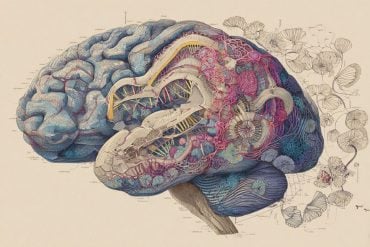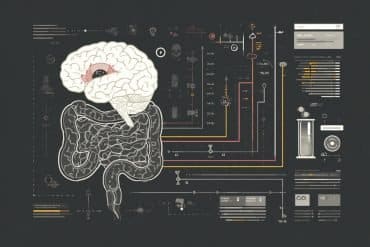Summary: A new study shows that cats with dementia exhibit brain changes strikingly similar to those seen in Alzheimer’s disease, including the toxic build-up of amyloid-beta in synapses. These changes disrupt connections between brain cells and contribute to memory and thinking decline.
Researchers also found that brain support cells were actively removing damaged synapses, a process that, when excessive, can worsen dementia. Because cats naturally develop these changes, they may provide a more accurate and humane model for studying Alzheimer’s and developing treatments for both species.
Key Facts:
- Shared Disease Mechanism: Cats with dementia show amyloid-beta build-up in synapses, a hallmark of Alzheimer’s in humans.
- Synapse Loss Link: Damage and removal of synapses by brain support cells parallels memory decline.
- Better Research Model: Naturally occurring feline dementia may be more relevant to human Alzheimer’s research than rodent models.
Source: University of Edinburgh
Cats with dementia have brain changes similar to those of people with Alzheimer’s disease, offering a valuable model for studying the condition in humans, a study says.
Scientists discovered a build-up of the toxic protein amyloid-beta in the brains of cats with the condition – one of the defining features of Alzheimer’s disease.
The findings offer a clearer picture of how amyloid-beta may lead to age-related brain dysfunction and memory loss in cats, experts say.
Many older cats develop dementia, leading to behavioural changes such as increased vocalisation – or meowing – confusion and disrupted sleep – symptoms similar to those seen in people with Alzheimer’s disease.
Scientists at the University of Edinburgh examined the brains of 25 cats of different ages after they had passed away, including those with signs of dementia.
Powerful microscopy images revealed a build-up of amyloid-beta within the synapses – connections between brain cells – of older cats and cats with dementia.
Synapses allow the flow of messages between brain cells and are vital to healthy brain function. Their loss strongly predicts reduced memory and thinking abilities in humans with Alzheimer’s disease.
The research team also found evidence that astrocytes and microglia – types of support cells in the brain – engulfed or ‘ate’ the affected synapses. This process, called synaptic pruning, is important during brain development but can contribute to synapse loss in dementia.
Experts say the findings will not only help to understand and manage dementia in cats but, given their similarities, could also contribute to the development of future treatments for people with Alzheimer’s disease.
Scientists studying Alzheimer’s disease in the past have relied heavily on genetically modified rodent models. Rodents do not naturally develop dementia, and studying cats with dementia has the potential to advance knowledge and help develop treatments for both cats and people, experts say.
The study, funded by Wellcome and the UK Dementia Research Institute, is published in the journal European Journal of Neuroscience.
The research team included scientists from the Universities of Edinburgh and California, UK Dementia Research Institute and Scottish Brain Sciences.
Dr Robert McGeachan, study lead from the University of Edinburgh’s Royal (Dick) School of Veterinary Studies, said: “Dementia is a devastating disease – whether it affects humans, cats, or dogs. Our findings highlight the striking similarities between feline dementia and Alzheimer’s disease in people.
“This opens the door to exploring whether promising new treatments for human Alzheimer’s disease could also help our ageing pets. Because cats naturally develop these brain changes, they may also offer a more accurate model of the disease than traditional laboratory animals, ultimately benefiting both species and their caregivers.”
Professor Danièlle Gunn-Moore, Personal Chair of Feline Medicine at the Royal (Dick) School of Veterinary Studies, said: “Feline dementia is so distressing for the cat and for its person. It is by undertaking studies like this that we will understand how best to treat them.
“This will be wonderful for the cats, their owners, people with Alzheimer’s and their loved ones. Feline dementia is the perfect natural model for Alzheimer’s, everyone benefits.”
About this dementia and Alzheimer’s disease research news
Author: Jessica Conway
Source: University of Edinburgh
Contact: Jessica Conway – University of Edinburgh
Image: The image is credited to Neuroscience News
Original Research: Open access.
“Amyloid-Beta Pathology Increases Synaptic Engulfment by Glia in Feline Cognitive Dysfunction Syndrome: A Naturally Occurring Model of Alzheimer’s Disease” by Robert McGeachan et al. European Journal of Neuroscience
Abstract
Amyloid-Beta Pathology Increases Synaptic Engulfment by Glia in Feline Cognitive Dysfunction Syndrome: A Naturally Occurring Model of Alzheimer’s Disease
Feline cognitive dysfunction syndrome (CDS; a.k.a. feline dementia) is an age-related neurodegenerative disorder, comparable to dementia in people, characterised by behavioural changes such as increased vocalisation, altered social interactions, sleep–wake cycle, disorientation and house-soiling.
Although the underlying mechanisms remain poorly understood, pathologies similar to those observed in Alzheimer’s disease (AD) have been identified in the brains of aged or CDS-affected cats, including brain atrophy, neuronal loss, amyloid-beta plaques, tau pathology and cerebral amyloid angiopathy.
Neuroinflammation and synapse loss, other important hallmarks of AD, may also play important roles in feline ageing and CDS, but these are yet to be explored.
Several mechanisms of synapse loss have been described in human AD and mouse models of amyloidopathy, including synaptic accumulation of amyloid-beta and the aberrant induction of synaptic engulfment by microglia and astrocytes.
In this study, immunohistochemistry and confocal microscopy were used to examine the parietal cortex of young (n = 7), aged (n = 10) and CDS-affected (n = 8) cats. Linear mixed effect modelling revealed that amyloid-beta accumulates within synapses in the aged and CDS-affected brain.
Additionally, in the aged and CDS groups, there was microgliosis, astrogliosis and increased synaptic engulfment by microglia and astrocytes in regions with Aβ plaques. Further, microglia and astrocytes show increased internalisation of amyloid-beta-containing synapses near plaques.
These findings suggest that amyloid-beta exerts a pathogenic effect in the feline brain, with mechanisms mirroring those seen in human AD.
Importantly, these results support the use of feline CDS as a naturally occurring, translational model of Alzheimer’s disease, offering valuable insights into AD pathogenesis and potential therapeutic targets.








